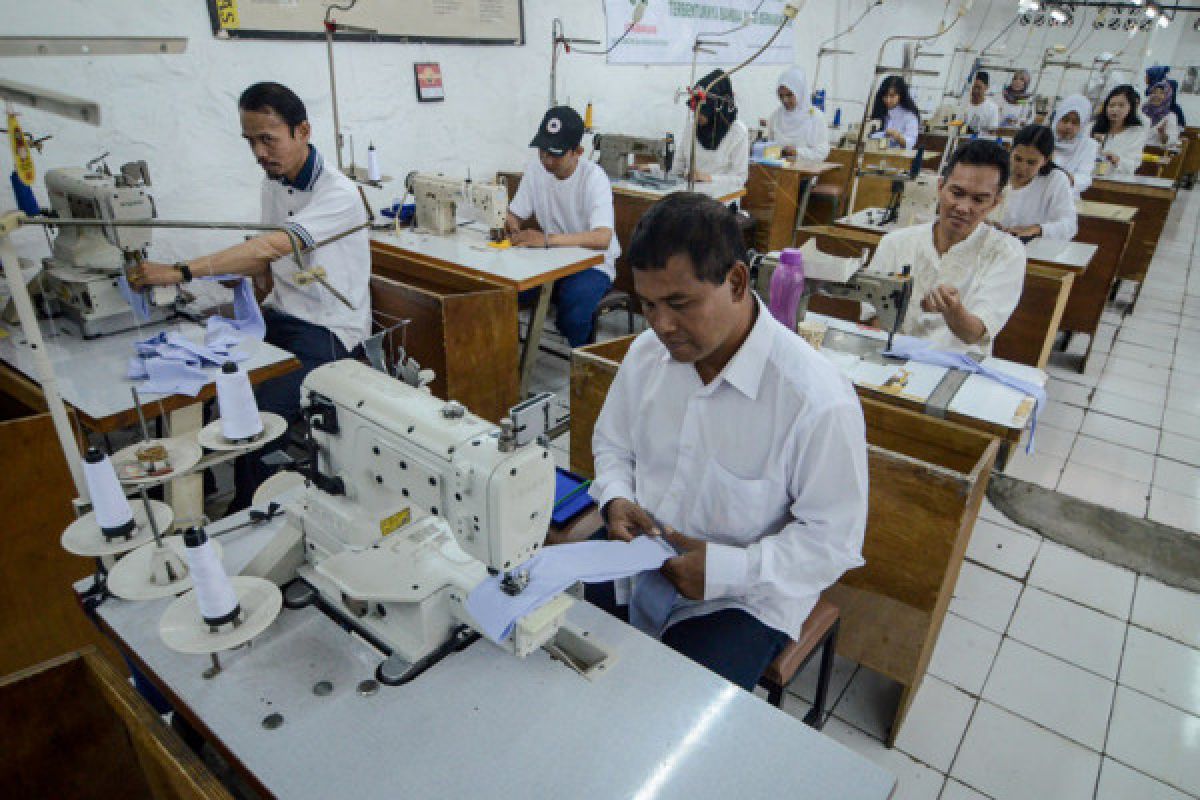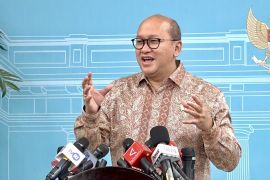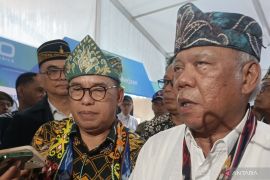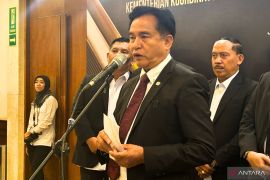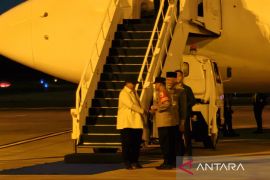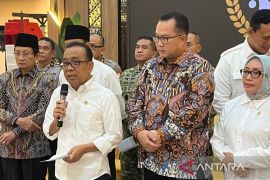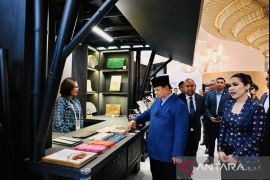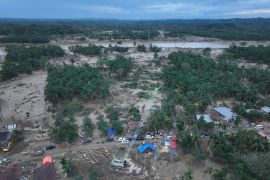Hence, the government is focusing on spurring the development of the manufacturing industry in order to become a sector that is globally competitive and reliable in promoting national economic growth.
In order to achieve these goals, steps for collaboration and synergy are needed among stakeholders, the government, business actors, academicians, and the community.
"We have just returned to manufacturing industries as a mainstream sector in national development. The Ministry of Industry is not alone in the efforts to carry out industrial development," Minister of Industry Airlangga Hartarto noted through his statement in Jakarta on Wednesday (Dec 5).
Hartarto, who delivered the statement at the High-Level Policy Round Table on Manufacturing Sector Review in Jakarta, explained that the government had launched the Making Indonesia 4.0 Road Map a clear strategy and direction to revitalize the national manufacturing industry to be more competitive in the international arena in the digital era.
"With the implementation of industry 4.0, it is believed that production will be more efficient with good quality," he stated.
In the meantime, Minister of National Development Planning (PPN) / Head of the National Development Planning Agency (Bappenas) Bambang Brodjonegoro remarked that the government was working to revitalize the domestic manufacturing industries so that growth would increase.
According to Brodjonegoro, manufacturing industry plays an important role in accelerating national economic growth. "So far, the manufacturing industry has contributed the most to gross domestic product (GDP). We have calculated the potential for economic growth. By looking at the current conditions, the scenario is 5.4-5.7 percent per year on average, and under an optimistic basis, the growth can be up to 6 percent in the period 2020-2024," he explained.
In order to further develop manufacturing industries, Hartarto added that strategic steps need to be taken to boost the competitiveness of the national manufacturing industry, including maintaining the availability of raw materials both from within and outside the country, so as to avoid disturbing the production process.
Then, more competitive energy costs, such as electricity and industrial gas, are needed. "The government also created a conducive investment climate through the provision of fiscal incentive facilities in the form of tax holidays and tax allowances," Hartarto added.
Another important factor is building productive industrial human resources (HR). In this case, the Ministry of Industry has implemented vocational education and training programs that `link and match` the vocational school students/SMK and industry at the polytechnic level.
This is one of the pilot projects for increasing HR competence in Indonesia. "The president has announced that the next period will focus on developing more massive human resources. We also collaborate with Switzerland and Germany to improve the curriculum, "he explained.
The development of human resources is one of the steps taken to face the fourth industrial revolution or Industry 4.0. The government has prepared the Making Indonesia 4.0 Road Map concept.
The aspiration contained in the Making Indonesia 4.0 Road Map is Indonesia`s target to be part of the 10 largest economies in the world by 2030, according to Head of Industrial Research and Development Agency (BPPI) of the Ministry of Industry, Ngakan Timur Antara, in Jakarta last month (Nov 25).
There are five manufacturing sectors which will serve as the pioneers in the application of industry 4.0 in Indonesia, namely the food and beverage industry; textile and clothing; automotive; chemistry; and electronics.
"We are spurring the development of the five sectors because they are able to contribute 60 percent to GDP, 65 percent to total exports, and 60 percent to industrial labor," Hartarto revealed.
Referring to the Central Bureau of Statistics (BPS) data, in the third quarter of 2018, the non-oil and gas processing industry grew by 5.01 percent, or an increase compared to the second quarter of 2018, which reached 4.27 percent.
In fact, the processing industry is still consistently giving the largest contribution to the GDP structure, with a share reaching 19.66 percent in the third quarter of this year.
Meanwhile, there are still sectors capable of surpassing economic growth in the third quarter of 2018.
These sectors include rubber and plastic industry, which grew by 12.34 percent; the textile and apparel industry, which grew by 10.17 percent; leather industry, leather goods, and footwear by 8.83 percent; base metal industry by 8.11 percent; and food and beverage industry by 8.10 percent.
Hartarto revealed that based on the 2017 World Bank report, Indonesia was able to rank highest in ASEAN for the contribution in the manufacturing sector to the world economy.
"For these achievements, Indonesia, with a 20.5 percent portion of contribution, is ranked fifth in the world among G20 countries," Hartarto stated through a statement in Jakarta on Wednesday.
According to data from the United Nations Industrial Development Organization (UNIDO), Indonesia is also ranked 4th in the world among 15 countries whose manufacturing industry`s contribution to gross domestic product (GDP) is above 10 percent.
UNIDO data show that in industrialized countries, the average manufacturing sector contribution to GDP only reaches 17 percent, while Indonesia is able to contribute up to 22 percent, below South Korea (29 percent), China (27 percent), and Germany (23 percent).
Indonesia surpassed Mexico (19 percent) and Japan (19 percent).
Editing by Yoseph Hariyadi
Reporter: Andi Abdussalam
Editor: Heru Purwanto
Copyright © ANTARA 2018
